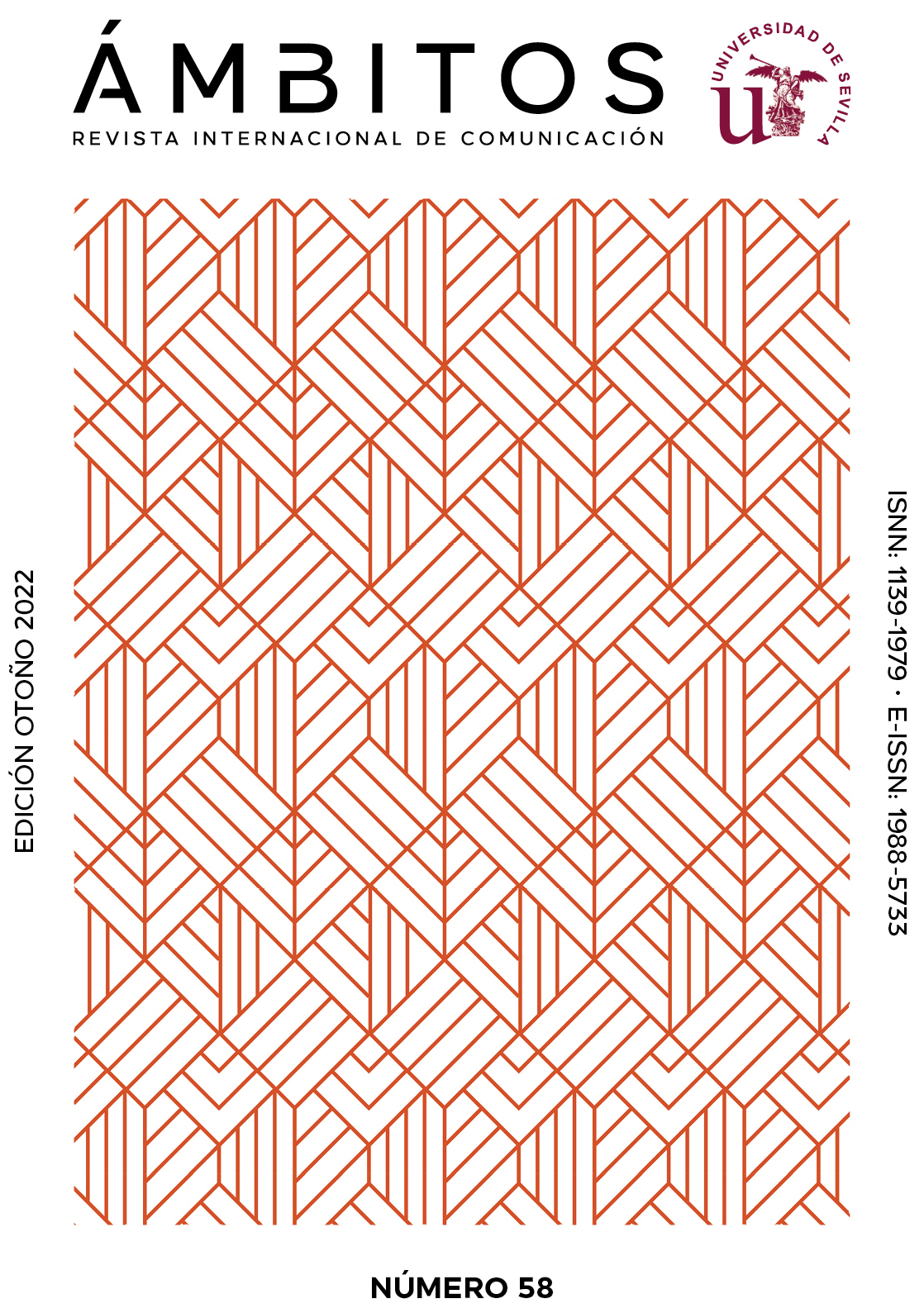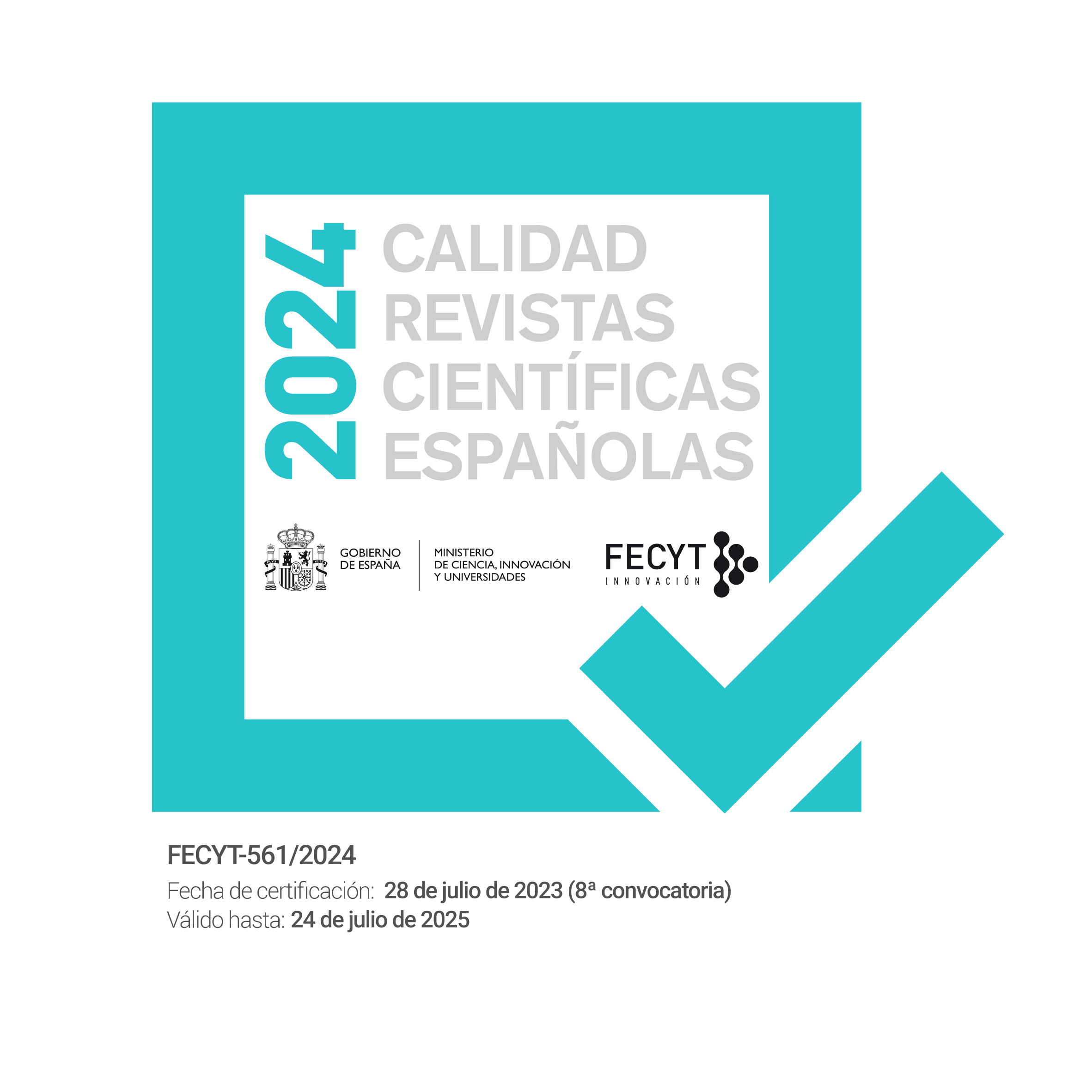Mediation in literary journalism: the case of Roberto Bolaño
DOI:
https://doi.org/10.12795/Ambitos.2022.i58.04Keywords:
cultural journalism, Roberto Bolaño, editorial industry, content analysisAbstract
This research analyzes the information related to Roberto Bolaño in the generalist media, as a case study to learn how the processes of media reinterpretation that journalism introduces when dealing with literature are developed. Through a content analysis, the 200 stories that three Spanish newspapers: El País, El Mundo and ABC and the Chilean La Nación have published about a writer who has won awards, critical prestige and great commercial success are analyzed. The study reveals that the Chilean author is a journalistic character due to the notoriety that the press gives him, although each newspaper has different selection criteria; in fact, the controversial change of publisher made by the widow was ignored by some media, which can be explained by the relations of the press with the publishing sector. In any case, a very positive image of the writer prevails, especially among Spanish newspapers, with attributes and evaluations that elevate him as a great universal author. Bolaño appears in the press not only when his works are published or republished, but also on the occasion of awards, exhibitions, or other tributes, confirming the routine of highlighting the social chronicle of cultural events. Of his works, Los detectives Salvajes and 2666 stand out, the best-known books, mentioned as elements of identification of the author. Of special importance is his death, which marks the beginning of his media presence, another characteristic of cultural journalism that also helps to create the myth of the cursed author.
Downloads
References
Benavente, C. (2002). El Personaje Mediático de la prensa: Análisis de la Construcción del Subcomandante Marcos (Ejército Zapatista de Liberación Nacional) en los diarios. Revistas Bolivianas, 23, 47-60.
Billelabeitia, A. (2008). Análisis de la crítica de literatura en periódicos de información general y suplementos culturales: el caso de Roberto Bolaño. (Tesis doctoral. Universidad del País Vasco).
Blanco Leal, M.M. (2008). Modelos de análisis para el estudio crítico de la prensa. Ediciones internacionales universitarias.
Bolognese, Ch. (2009). Pistas de un naufragio. Cartografía de Roberto Bolaño. Margen.
Bourdieu, P. (1983). Campo del poder y campo intelectual. Folio ediciones.
Cordón, J. A. y Lopez C. (2012). El libro electrónico: invarianzas y transformaciones. En El profesional de la Información, 21, 83-90.
https://doi.org/10.3145/epi.2012.ene.11
Del Prado, J. (2010). Poe, Baudelaire y Mallarmé en el nacimiento del poema moderno. Revista de Filología, 28, 95-121. https://dialnet.unirioja.es/servlet/articulo?codigo=3284417
Echevarría, I. (2013). Bolaño internacional. Algunas reflexiones en torno al éxito internacional de Roberto Bolaño. Estudios Públicos, 130, 175-202. https://bit.ly/3Myqcil
Espinosa, P. (2003). Territorios en fuga: estudios críticos sobre la obra de Roberto Bolaño. Frasis editores.
Fontcuberta, M. (1990). El discurso de la prensa del corazón. Anàlisi: quaderns de comunicación i cultura, 13, 53-72. https://ddd.uab.cat/pub/analisi/02112175n13/02112175n13p53.pdf
Gabrielli, R. (2009, 15 de mayo). Bolaño, poeta maldito que Estados Unidos necesitaba. La bitácora de Gabrielli. https://labitacoraderolandogabrielli.blogspot.com
Galgani, J. (2016). Literatura y prensa: la columna de escritores en Chile. Alpha (Osorno), 42, 145-161.
https://doi.org/10.32735/S0718-2201201600042%25x
Galgani, J. (2017). Escritores en la prensa: autoría y autoridad. Literatura y lingüística, 35, 219-234.
http://dx.doi.org/10.4067/S0716-58112017000100219
Gómez-Escalonilla, G. (2019). La cultura en los medios: el protagonismo de los eventos culturales. En Huerta, M.I., Rodrigo, L. y Padilla, G. (Eds.). Límites en la comunicación actual. Pirámide. (pp.165-178)
Guardado da Silva, C. y Catanho, C. (2021). Bookstagram y los mercados editoriales estadounidense y portugués. Ámbitos. Revista Internacional De Comunicación, 53, 25–41.
https://doi.org/10.12795/Ambitos.2021.i53.02
Gutiérrez Giraldo, R. (2014). Las intervenciones críticas de Roberto Bolaño: el escritor como estratega en el combate literario. Cuadernos de literatura, 36, 310-331.
Juárez, L. (Ed.). (2019). Escritores y escritura en la prensa. Universidad Nacional de la Plata.
Manzoni, C. (2002). Roberto Bolaño: la literatura como tauromaquia. Ed. Corregidor.
Marín, F. (2004). La construcción del mito a través de la prensa: el caso Bin Laden. Comunicación Social.
Mesquita, M. (1999). Le personnage journalistique. De la narratologie a la déontologie. Recherches en communication, 11, 169-194.
Montesa, S. (Ed.) (2003). Literatura y Periodismo: la prensa como espacio creativo: Actas del XVI Congreso de Literatura Española Contemporánea de 2002, AEDILE.
Moreno, F. (2011). Roberto Bolaño. La experiencia del abismo. Ediciones Lastarria.
Moreno, F. Ed. (2005). Roberto Bolaño: una literatura infinita. Université de Poitiers / CNRS.
Ortiz, G. (2014, 21 de julio). La nube negra de Roberto Bolaño. Jot Down, 7.
Paz Soldan, E. (2013). Bolaño salvaje. Candaya.
Plaza Atenas, D. (2005). Roberto Bolaño: en el lado de afuera. En F. Moreno (Ed.): Roberto Bolaño: una literatura infinita. Université de Poitiers / CNRS. (pp.101-108).
Poblete Alday, P. (2006). El balido de la oveja negra la obra de Roberto Bolaño en el marco de la Nueva Narrativa Chilena. Universidad Complutense de Madrid.
Riaño, P. H. (2014, 29 de abril). Cebrián impone “la mejor cobertura” de Penguin Random House en ‘El País’. El Confidencial.
Rivera, J. B. (1995). El periodismo cultural. Paidós.
Rodríguez Pastoriza, F. (2006). Periodismo cultural. Síntesis.
Rosemberg, F. y Troya, E., (2012). Algunos procesos de la construcción de mitos. Iztapalapa Revista de Ciencias Sociales y Humanidades, 72, 137-152.
Sánchez Cuervo, M. (2015). Representación retórica de Shakespeare en la prensa canaria del siglo XIX. Tonos digital: Revista de estudios filológicos, 28.
Schiffrin, A. (2000). La edición sin editores. Destino.
Solotorevsky, M. (2013). El espesor escritural en novelas de Roberto Bolaño. Mitología Hoy, 7, 163-171.
Spiller, R. (2009). Roberto Bolaño: fracasar con éxito o navigare necessum est. En Y. Sánchez y R.Spiller: Poéticas del fracaso. Gunter Narr Verlag Tügirger.
Tuchman, G, (1983). La Producción de la noticia. Estudio sobre la construcción social de la realidad. Gustavo Gili.
Tuñón, A. (1990). El acontecimiento cultural y la construcción de mitos. Anàlisi: quaderns de comunicació i cultura 13, 27-41.
Vallejo, M.L. (1993). La crítica literaria como género periodístico. Eunsa.
Vidal, P. (2000, 23 de noviembre). Bolaño airea los fantasmas de la dictadura en el libro ‘Nocturno de Chile’. El País.
Volpi, J. (2009). El insomnio de Bolivar: Cuatro consideraciones intempestivas sobre América Latina en el Siglo XXI. Debate.
Downloads
Published
How to Cite
Issue
Section
License
Copyright (c) 2022 Gloria Gómez-Escalonilla

This work is licensed under a Creative Commons Attribution-NonCommercial-ShareAlike 4.0 International License.
Ámbitos. Revista Internacional de Comunicación is an open access journal, which means that all content is freely available at no charge to the user or their institution. Users may read, download, copy, distribute, distribute, print, search or link to the full text of articles, or use them for any other lawful purpose, without seeking prior permission from the publisher or author. This definition of open access is in accordance with the Budapest Open Access Initiative (BOAI).

Unless otherwise noted, all content in the electronic edition is distributed under a "Creative Commons Attribution-NonCommercial-ShareAlike 4.0 International License". You can consult the informative version and legal text of the licence here. This should be expressly stated in this way where necessary.
In case of acceptance of the manuscript, the authors cede the rights of the work for its publication to Ámbitos. Revista Internacional de Comunicación under the Attribution-NonCommercial-ShareAlike 4.0 International license contract (CC BY-NC-SA 4.0). The authors retain copyright and third parties are authorised to copy, distribute and make use of the work, provided they comply with the terms and conditions set out in the licence
- Cite the authorship and the original source of publication (journal, publisher and URL of the work).
- Do not use them for commercial purposes.
- If you remix, transform or create from the material, you must release your contributions under the same license as the original.
More information can be found at https://creativecommons.org/licenses/by-nc-sa/4.0/deed.es


















